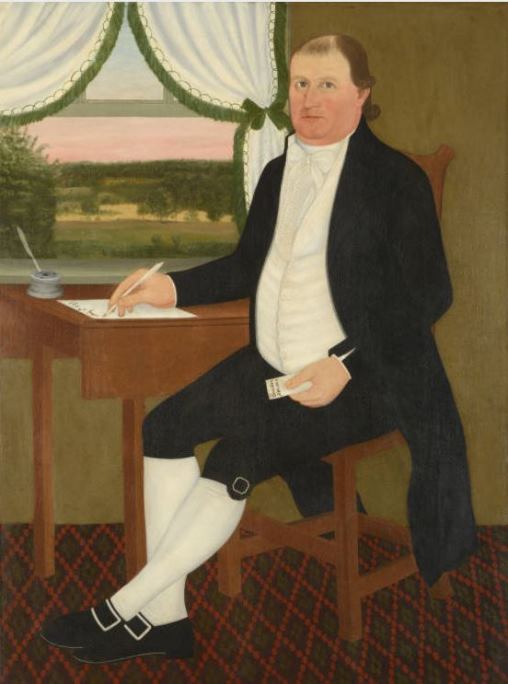John Brewster Jr. was one of the preeminent portrait artists of the late 18th and early 19th centuries. His paintings helped define American folk art of the time and, today, provide useful insight into the lives of New England’s elite classes during the colonial period. His achievements appear all the more remarkable when considering Brewster’s success came despite his being born deaf and mute in an era before the standardization of sign language.
Brewster was born the son of Dr. John Brewster—a direct descendant of the Mayflower pilgrim William Brewster—in Hampton, Connecticut, in May of 1766. A member of New England’s Federalist elite by birth, the challenges John Brewster Jr. faced in communicating with others kept him from socializing far outside his immediate family.
As a young man, Brewster learned to paint from a local pastor and painter, the Reverend Joseph Steward. By the 1790s, Brewster traveled throughout New England in search of commissions. Influenced by the works of Ralph Earl, Brewster’s paintings often incorporated the expressive facial features of his subjects set against a simple background depicted by broad areas of color.

John Brewster, James Eldredge, 1995, Oil painting – Connecticut Historical Society
Brewster Among First Students at American School for the Deaf
In 1805, having left Connecticut, John Brewster moved into his brother’s house in Buxton, Maine. He lived there for the rest of his life. While in Maine, Brewster’s career prospered, thanks, in part, to commissions from some of the most prestigious family’s in New England.
Despite his success on canvas, Brewster continued to encounter challenges faced by the deaf and the mute in a country that widely ignored the needs of deaf culture. So, in 1817, when the American School for the Deaf opened in Hartford, Connecticut, Brewster (now age 51) became a member of the first class of students to enroll. Brewster’s class consisted of just 7 students with an average age of 19, but this did not stop Brewster from engaging in fluent conversations with his classmates thanks to the help of an increasingly standardized form of American Sign Language.
Historians know little about Brewster’s life after leaving school. What is known is that he returned to Maine and to painting—capturing the lives of New England’s (and particularly Maine’s) cultural leaders on canvas right up until his death in 1854 at the age of 88.









